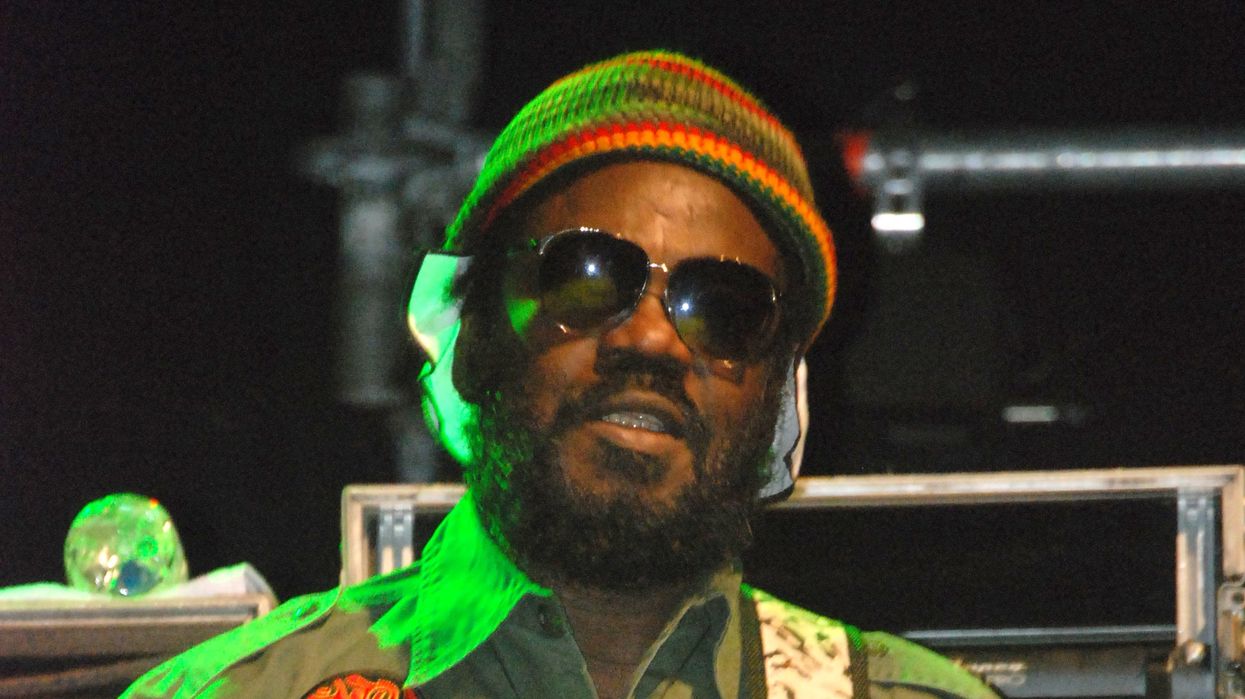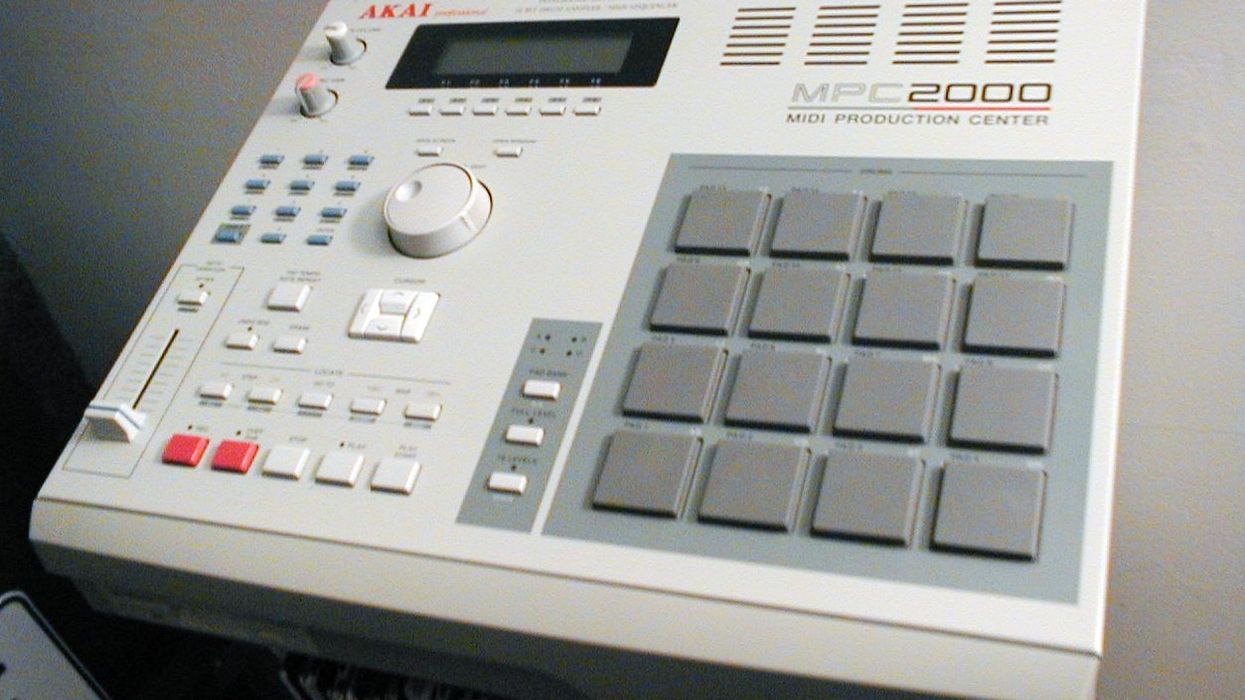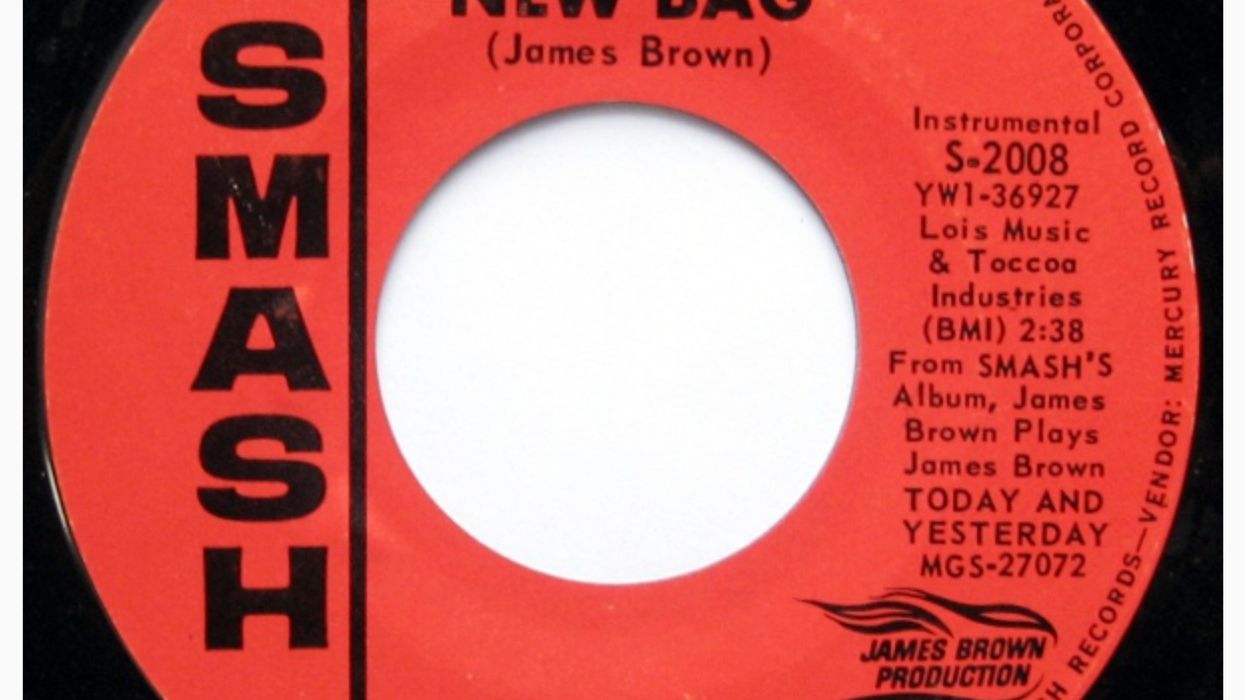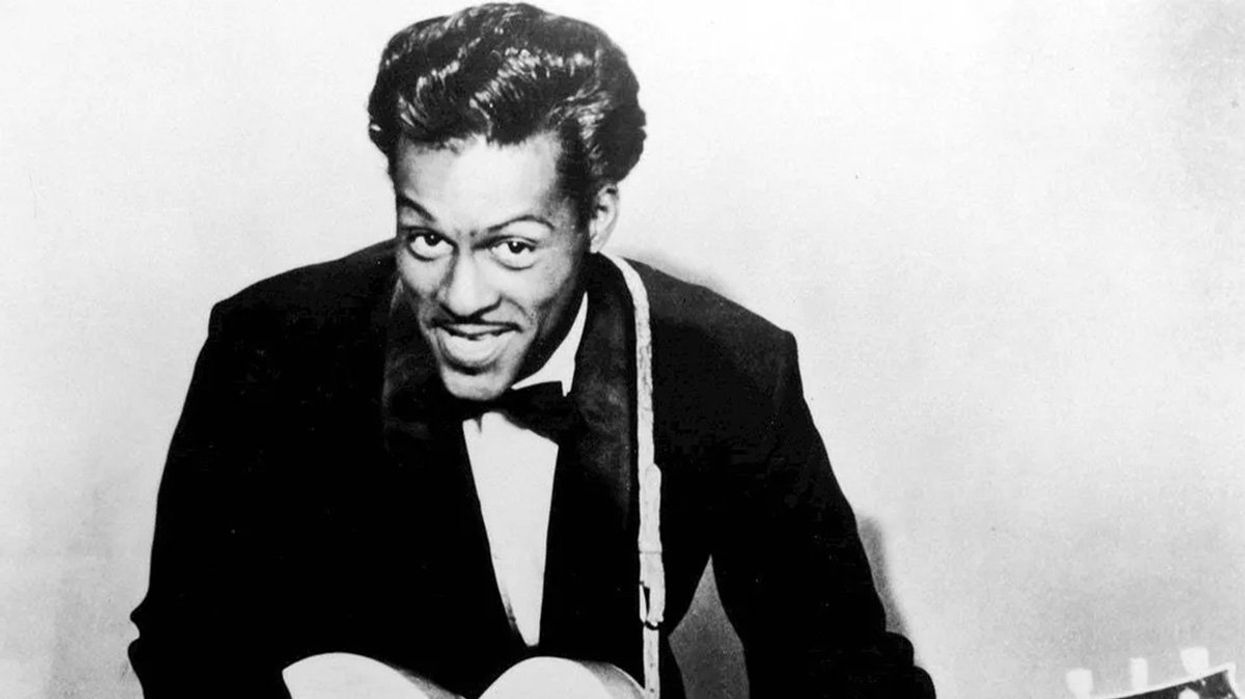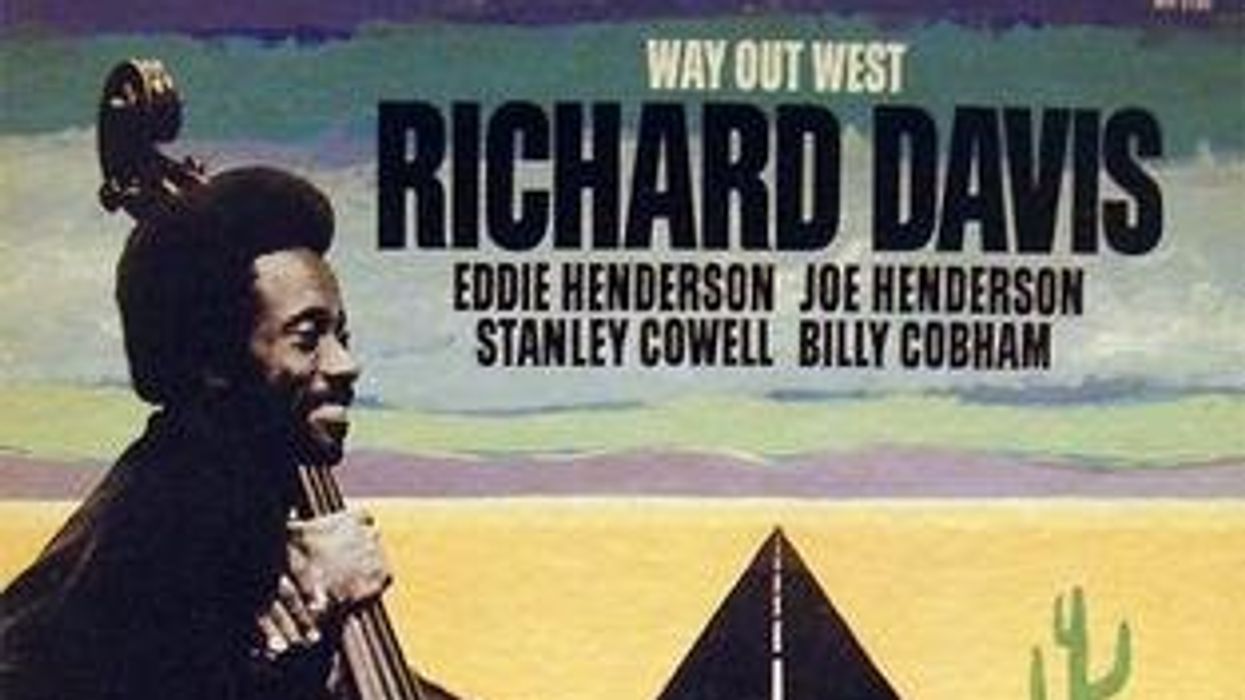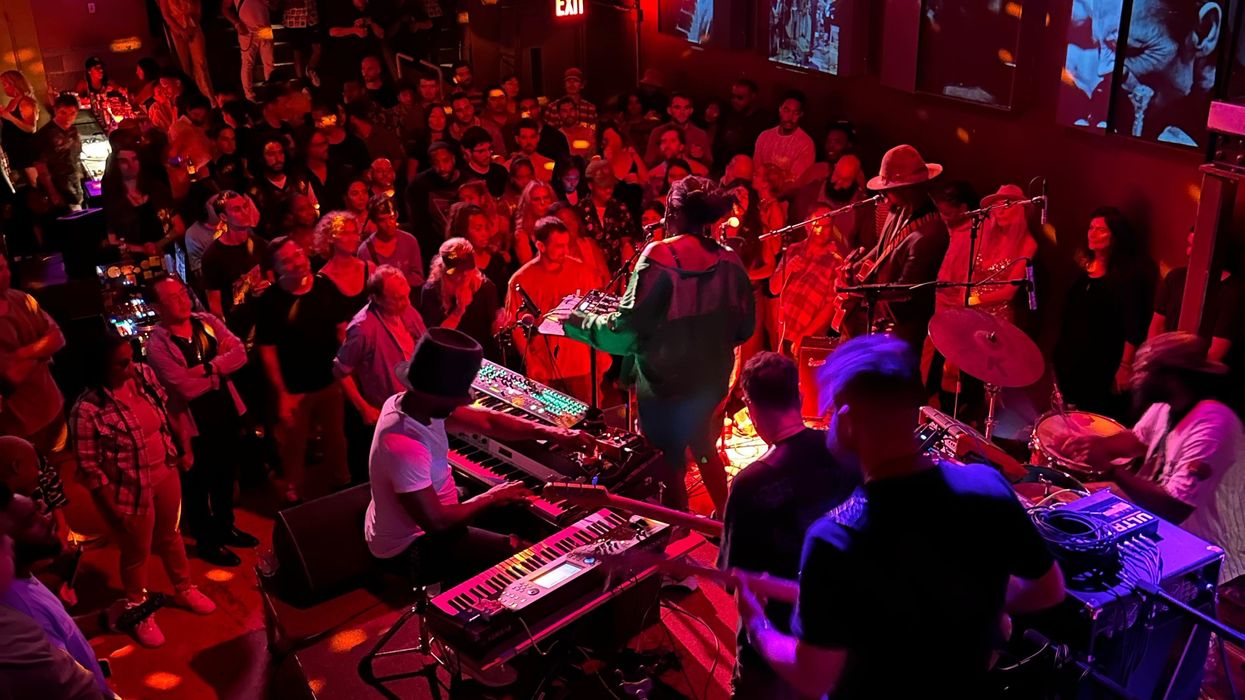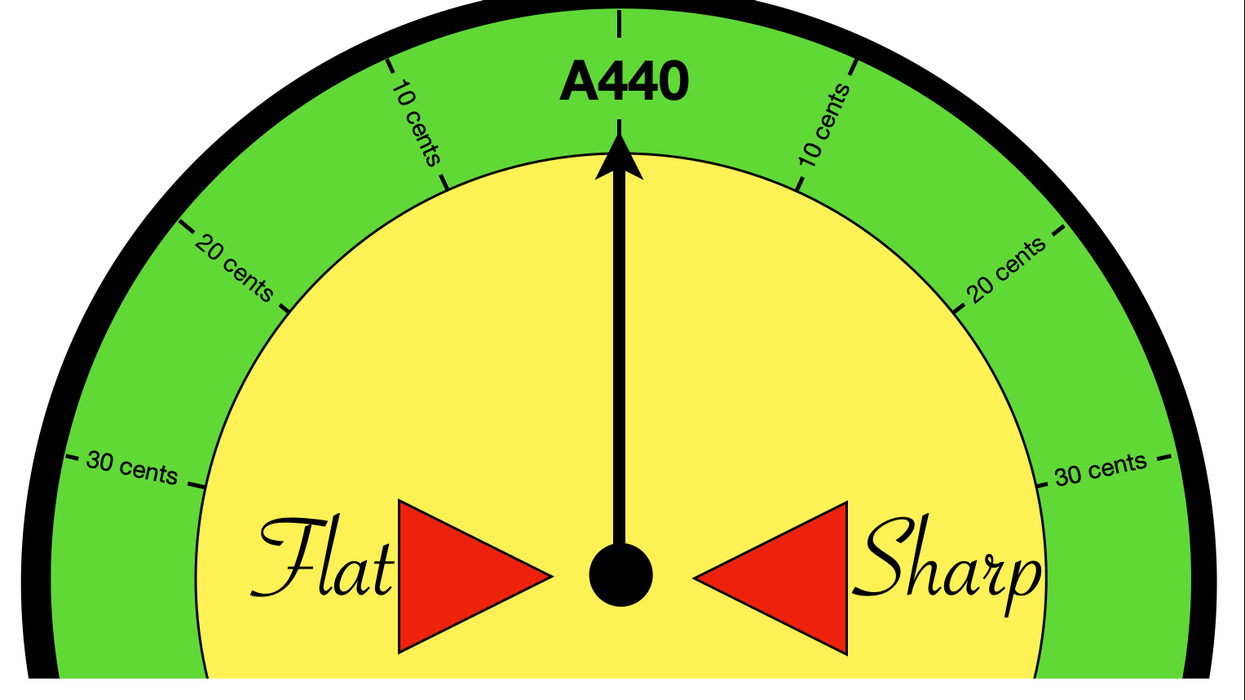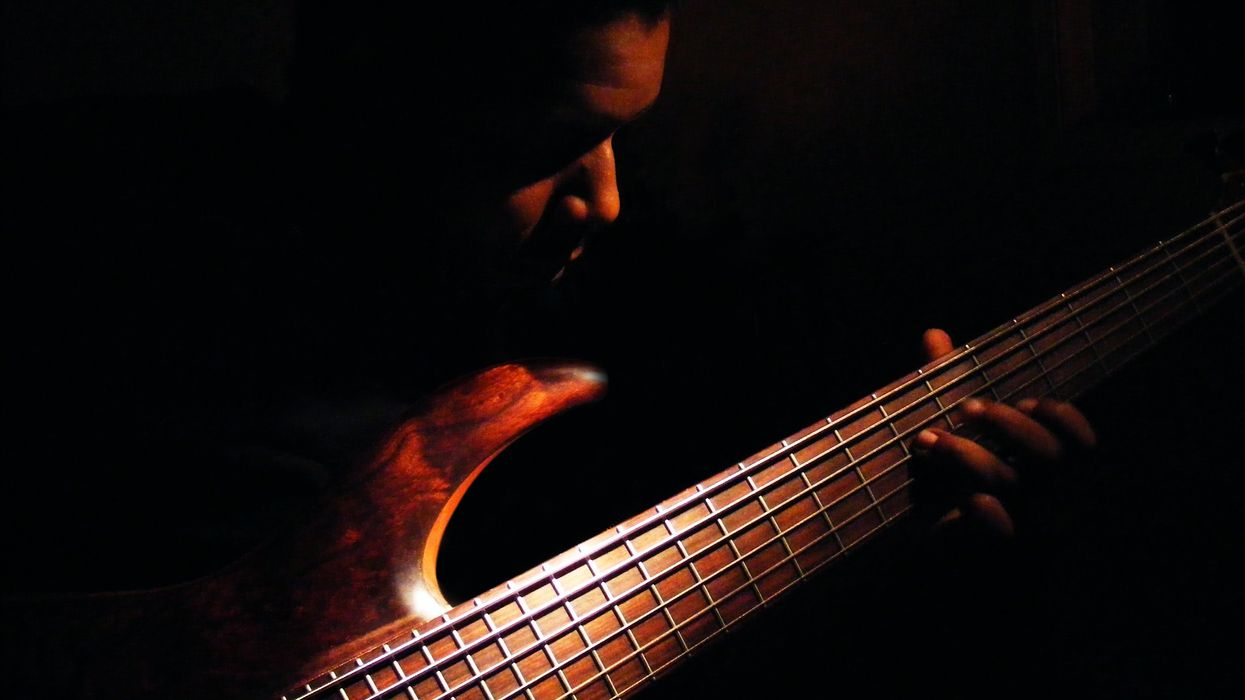Bass is about connection—within the music, among the players, and between the musicians and the listener. Even if you can only hear a song’s bass line, say, in a noisy, crowded room, or through an adjoining wall, you might be able to recognize the song—and conjure up all the memories and emotions of how that song speaks to you. Simply through bass. In the musical conversation between rhythm and harmony, bass bridges the gap, gluing everything together. And chances are, as the bass player in your band, you’re not only providing that musical groove glue, but you may also be holding the band together practically and interpersonally. And the whole time, you’re making everyone and everything feel and sound good.
It’s hard to think of any player who embodied this idea of bass as connection more than Aston “Family Man” Barrett. Though (like most bass players) he’s not exactly a household name, he truly should be: As the long-time bassist, arranger, and coproducer of Bob Marley and the Wailers, his musical innovations and memorable lines are exceedingly familiar to anyone who has ever heard reggae music. “Fams,” as he was known, died in February of this year at 77, leaving a long legacy of reggae mastery.
Indeed, as Family Man was one of reggae’s original creators, he helped birth the bass-heavy Jamaican genre into existence from its stylistic precursors, ska and rocksteady. Together with his younger brother, drummer Carlton “Carly” Barrett, Fams created and established much of the hypnotic pulse and infectious vibe that characterizes reggae rhythms. Family Man’s feel was firm yet relaxed, his tone deep, dark, and plush. It was with these bottom-heavy colors, coaxed from a Höfner “Beatle” bass in his early years, then from his flatwound-strung Fender Jazz bass, that Aston Barrett crafted snaky, syncopated hooks and short melodic phrases that bolstered the vocal melodies while playing against the bouncing backbeats of the rhythm guitar and organ.
Before building his first bass from plywood and a length of 2“x4”, Barrett’s first musical love was singing along to American soul artists on Jamaican radio. “When I’m playing the bass, it’s like I’m singing,” Fams told music journalist Bill Murphy in a 2007 Bass Player magazine interview. “I compose a melodic line and see myself like I’m singing baritone.” You can hear his vocal-like bass stylings in songs like “Is This Love” and “Waiting in Vain.” These and many other Barrett bass lines serve as countermelodies, animated motifs that play against each song’s main vocal melody. Family Man’s parts are often easy to sing along to, so it’s easy to imagine Fams singing them in his head.
“Fams not only kept that intragroup connection strong, but he also went beyond the bass, creating and composing many of the intricate, interconnecting parts you can hear in any Bob Marley and the Wailers recording.”
The Barrett brothers played in several early reggae bands before joining the Wailers full-time in 1972, including famed producer Lee “Scratch” Perry’s house band, the Upsetters. In 1969, when the original Upsetters lineup couldn’t make a U.K. tour due to a scheduling conflict, Aston and Carlton’s band the Hippy Boys became the new Upsetters. In this group, they backed a pantheon of early reggae artists, including the Wailers, a vocal trio with Marley, Peter Tosh, and Bunny Wailer. The Upsetters eventually became the core of the Wailers’ rhythm section. Tosh and Bunny Wailer left the band in 1974.
It was years before, though, well before he had children (and he had a lot of children) that Aston Barrett began calling himself “Family Man.” This reflected how he saw it as his role to keep the band together. As the Wailers’ bandleader, arranger, and co-producer, Fams not only kept that intragroup connection strong, but he also went beyond the bass, creating and composing many of the intricate, interconnecting parts you can hear in any Bob Marley and the Wailers recording. But his primary musical connection was with his brother, Carly. Among other reggae conventions, the Barrett brothers pioneered the “one drop” rhythmic style, in which the bass and drums skip the downbeat—dropping the one—as you can hear in the bass and drum parts of songs like “Trenchtown Rock” and “One Drop.”
I met Family Man at the photo shoot for that 2007 Bass Player cover story, and again in 2012 when Phil Chen and I interviewed him onstage during the weekend he received his Bass Player Lifetime Achievement Award. During the photo shoot, we also shot a short video interview, which you can find on YouTube, where he demonstrates the “One Drop” bass line, plucking with his thumb between the end of the neck and the neck pickup. Even barely amplified, you can feel the depth that comes from Family Man’s bass approach. In the Marley years, that huge “earth sound” came from two Acoustic 18" speaker cabinets and two 4x15 cabinets. “You need them that big to get that sound,” Barrett told Murphy, “because reggae music is the heartbeat of the people. It’s the universal language what carry that heavy message of roots, culture, and reality. So the bass have to be heavy and the drums have to be steady.”Aston "Family Man" Barrett, Bob Marley & the Wailers bassist - 2007 Bass Player mag. interview 1/2
Here's the first part of Bill Leigh’s 2007 interview with Bob Marley & the Wailers' bassist Aston "Family Man" Barrett.


